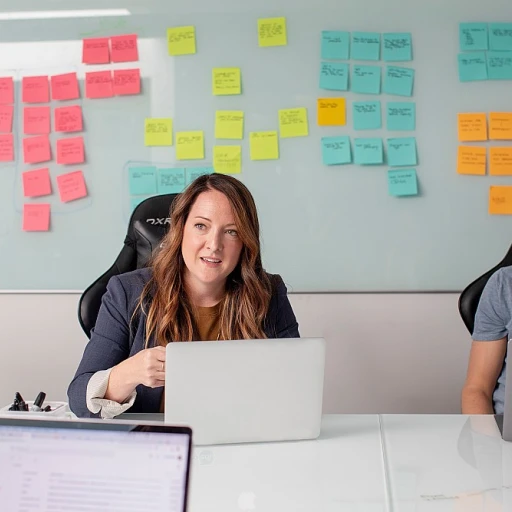Embracing Automation in Retail Procurement
Integrating Automation in Retail Procurement
In the rapidly evolving landscape of retail procurement, automation has emerged as a pivotal element. Organizations are increasingly adopting automated systems to streamline their procurement processes, enhance efficiency, and reduce operational costs. The integration of automation in procurement activities allows businesses to shift from traditional, manual purchasing methods to more centralized procurement models.
Automated procurement operating models can significantly enhance the efficiency of supply chain management. By leveraging technology, businesses can optimize their procurement function, ensuring compliance and strategic alignment across various business units. This shift not only facilitates cost savings but also empowers procurement units to focus on more strategic tasks such as supplier relationships and category management.
Automation also plays a crucial role in data management and decision making. By automating data collection and analysis, organizations can make informed decisions that align with their strategic goals. This capability is essential for maintaining agility and adaptability in procurement, as discussed in other sections. Moreover, a center-led procurement approach, supported by automation, can help organizations maintain a competitive edge in the market.
For those interested in exploring how automation influences virtual teams and the broader work culture, this article provides valuable insights.
Sustainability as a Core Component
Prioritizing Sustainable Practices in Procurement
In today’s retail landscape, integrating sustainability into the procurement operating model is no longer optional but a strategic necessity. Retailers are increasingly recognizing the importance of embedding eco-friendly practices and sustainability criteria into their procurement processes. Choosing local suppliers is one approach organizations can take to reduce the environmental impact associated with transportation. By supporting local procurement activities, businesses not only cut down on carbon emissions but also promote community development while enhancing supplier relationships. A strategic focus on local sourcing can also facilitate better compliance with environmental regulations, effectively aligning procurement processes with government policies. Implementing a sustainable procurement model often requires restructuring management and processes to prioritize environmental and social governance (ESG) criteria. Centralized procurement models, or even center-led procurement models, can assist in consolidating these efforts across business units, ensuring a uniform approach and adherence to sustainability goals. Moreover, innovation in procurement technologies can greatly aid in this cause. They provide organizations with advanced data analytics capabilities that can monitor supplier performance in real-time, ensuring compliance with sustainability efforts and identifying potential areas for cost savings. A robust procurement function that embraces sustainability as a core component can transport an organization into a realm of improved resource efficiency, bolstered brand reputation, and ultimately, a more sustainable future. Businesses must strategically align their procurement models with sustainability to stay competitive in an ever-evolving retail environment. For a deeper insight into navigating the complexities and hurdles associated with these commitments, visit our blog on Navigating the Remote Work Landscape: Training and Development Hurdles.Agility and Adaptability in Procurement
Enhancing Flexibility in Procurement Practices
In the evolving landscape of retail procurement, agility and adaptability are paramount. Organizations must navigate a complex web of suppliers, regulatory demands, and fluctuating market conditions. Traditional procurement processes often fall short in this dynamic environment. By transforming procurement models, companies can better align with contemporary demands. To achieve this, businesses are increasingly adopting decentralized and center-led procurement structures. These models allow for greater local supplier engagement, offering flexibility to meet regional demands while maintaining overall strategic alignment. This hybrid approach combines the strengths of centralized procurement with the responsiveness of localized decision-making. Organizations need to implement strategic procurement processes that prioritize cost savings and efficiency while remaining adaptable. The ability to quickly pivot procurement activities in response to supply chain disruptions or changes in demand is crucial. This requires a keen understanding of procurement management and a commitment to continuous process improvement. Moreover, an agile operating model leverages the latest in technology and data analytics. Procurement units can access real-time insights into purchasing trends, supplier performance, and cost implications, enhancing decision-making capabilities across the organization. By integrating these digital tools, businesses can streamline procurement processes, ensuring that they remain compliant and efficient. Agility in procurement isn't just about internal processes; it also involves forging strategic supplier relationships. Collaborative partnerships with suppliers enable organizations to be more resilient against market volatility and foster innovation. By working closely with suppliers, businesses can build a supply network that is responsive and supportive of strategic goals. As the retail procurement landscape continues to shift, organizations must also prepare their workforce for the challenges and opportunities ahead. Skill development for procurement professionals is essential to managing this change effectively. By equipping teams with the relevant knowledge and expertise, companies ensure they are well-positioned to operate in this new environment. For further reading on alternative strategies to traditional models, explore more on transforming compensation systems.Leveraging Data Analytics for Decision Making
Enhancing Procurement Decision Making through Data Analytics
Harnessing data analytics within retail procurement can be a transformative strategy in an organization's operational toolbox. It enables smarter, data-informed decision making, which can streamline processes and improve efficiency to meet the evolving demands of business units. Retailers leveraging data analytics are better equipped to anticipate market trends, given the dynamic nature of consumer preferences and the supply chain landscape. These insights not only enhance procurement activities but also enable organizations to refine their procurement models to achieve cost savings. For organizations, the proactive use of data allows for a more strategic procurement approach and creates alignment between procurement functions and business objectives. Centralized procurement, or center-led models, benefit particularly from this approach, as data flows from various procurement processes can be synthesized to inform a unified strategy. Here are several ways in which data analytics transforms retail procurement operating models:- Enhanced Supplier Relationships: Analyzing supplier performance metrics aids in managing and optimizing supplier relationships, ensuring compliance, and fostering transparency.
- Category Management: Data analytics helps in categorizing and understanding spending patterns across procurement categories, which aids in strategic purchasing decisions and optimizing category management.
- Process Optimization: By understanding and analyzing procurement activities, organizations can streamline purchasing processes, focusing on efficiency and adaptability.
- Local and Strategic Sourcing: Businesses can pinpoint opportunities for strategic sourcing and assess the implications of local purchasing opportunities, aligning with sustainability objectives discussed elsewhere in this conversation.
Collaborative Supplier Relationships
Building Strong Ties with Suppliers
In the ever-evolving landscape of retail procurement, nurturing robust relationships with suppliers is paramount. Establishing collaborative supplier relationships can be a strategic advantage, fostering a sense of partnership that transcends traditional transactional interactions. By integrating suppliers into the organization's procurement processes, businesses can optimize their operating models to better respond to market demands.
One approach is to shift from a centralized procurement model to center led or leveraged models, where the expertise of each supplier is recognized and harnessed across multiple business units. This strategic alignment can lead to improved compliance and cost savings, as well as more efficient procurement activities through effective category management.
The importance of transparency and open communication with suppliers cannot be understated in procurement management. Regularly engaging with suppliers and sharing forecasts or strategic plans can improve the overall supply chain dynamics, leading to mutually beneficial outcomes. Organizations that focus on fostering trust and understanding with their suppliers often find themselves better positioned to manage uncertainties and volatility in supply.
Moreover, aligning procurement function objectives with supplier capabilities allows organizations to strategically position themselves within the marketplace. Developing long-term partnerships and establishing shared goals creates an ecosystem where both local and global suppliers are invested in the success of the organization, enhancing the sustainability and agility of the procurement process.












